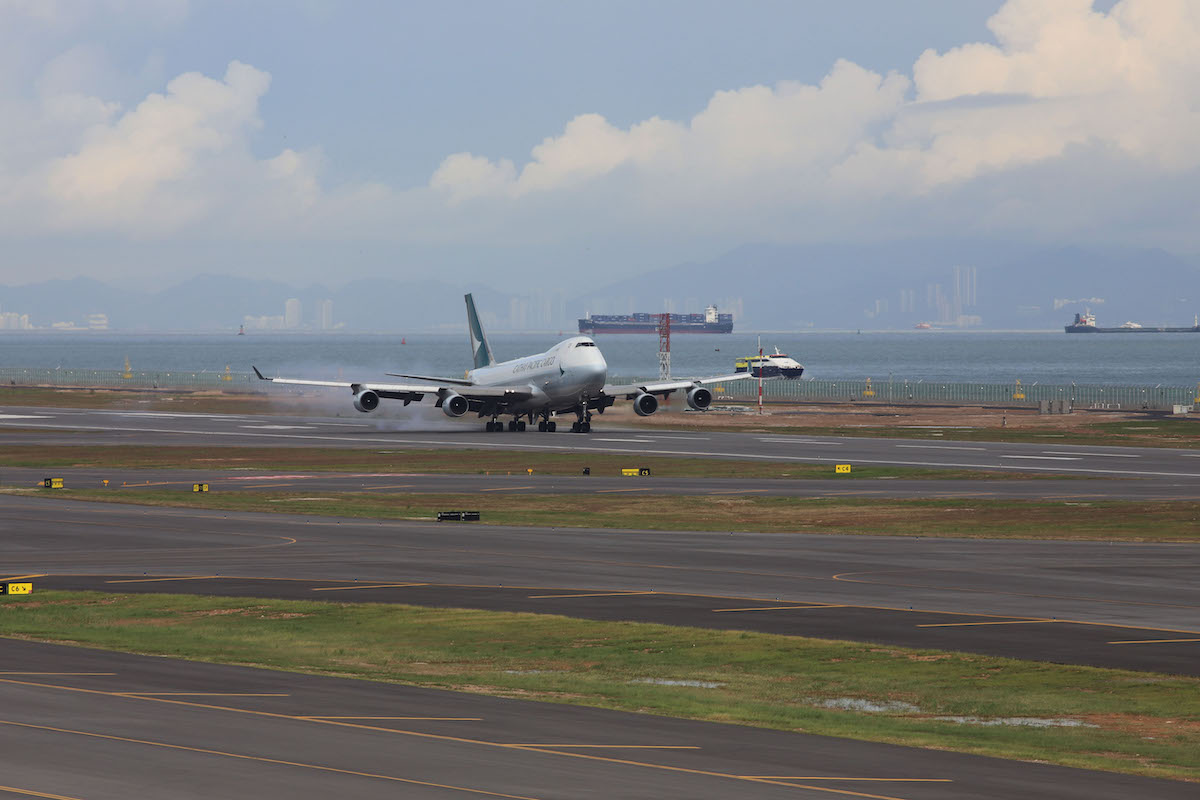Hong Kong Airport's Third Runway Risks White Elephant Status

Photo Credit: Hong Kong International Airport
After a decade-plus of planning and building, Hong Kong International Airport has a new runway. It opened for commercial use July 8, starting with the arrival of a Cathay Pacific cargo flight from Shanghai.
“The commencement of the third runway is a milestone achievement for the Hong Kong international aviation hub that will greatly enhance its capacity," Cathay Pacific CEO Augustus Tang said in a statement. "The growth potential afforded by the commencement of the three-runway system at HKIA ... will ensure that Cathay Pacific and our home hub will remain competitive for many years to come.”
The opening is the culmination of a multi-decade long expansion process. As far back as the early 2000s, Hong Kong’s dynamic aviation growth had local officials convinced the airport's two runways would not be enough. China’s tremendous economic growth alone made Hong Kong a fast-growing airline market, for passengers and cargo alike. By 2016, when construction on the third runway commenced, the sense of urgency was even greater. Two years later, when Hong Kong handled a record 75 million passengers, airlines wondered how they would manage until 2022, when the new runway would finally arrive. Surely by then, the airport would be bursting at the seams.
What nobody anticipated was the social unrest that depressed traffic in 2019, followed by a global pandemic that at times brought passenger volumes close to zero. Cathay Pacific, Hong Kong's dynamic global connector, saw passenger traffic collapse. Demand remained for cargo flights but strict quarantine rules for airline crews hampered those as well. Midway through 2022, the local airline market is only starting to show early signs of recovery. Travel restrictions have been relaxed, yet the airport is still handling just a small fraction of its pre-pandemic traffic.
The third runway that looked like a no-brainer infrastructure investment just a few years ago, now risks becoming a white elephant. Since 2019, Beijing has taken much greater control of Hong Kong, raising questions about the city’s future status as an aviation hub. Expats are leaving the city, and so are some financial institutions. It’s unclear to what extent tourists will return.
Hong Kong's airport expansion does not end with the new runway. In 2024, a new concourse will open, along with a new bag handling system. While traffic will likely be closer to pre-Covid norms than it is now, reaching 75 million passengers again could take many additional years. Hong Kong was once the eighth busiest passenger airport in the world, achieving that rank with just two runways. Now it has three, but without many of the passengers.
